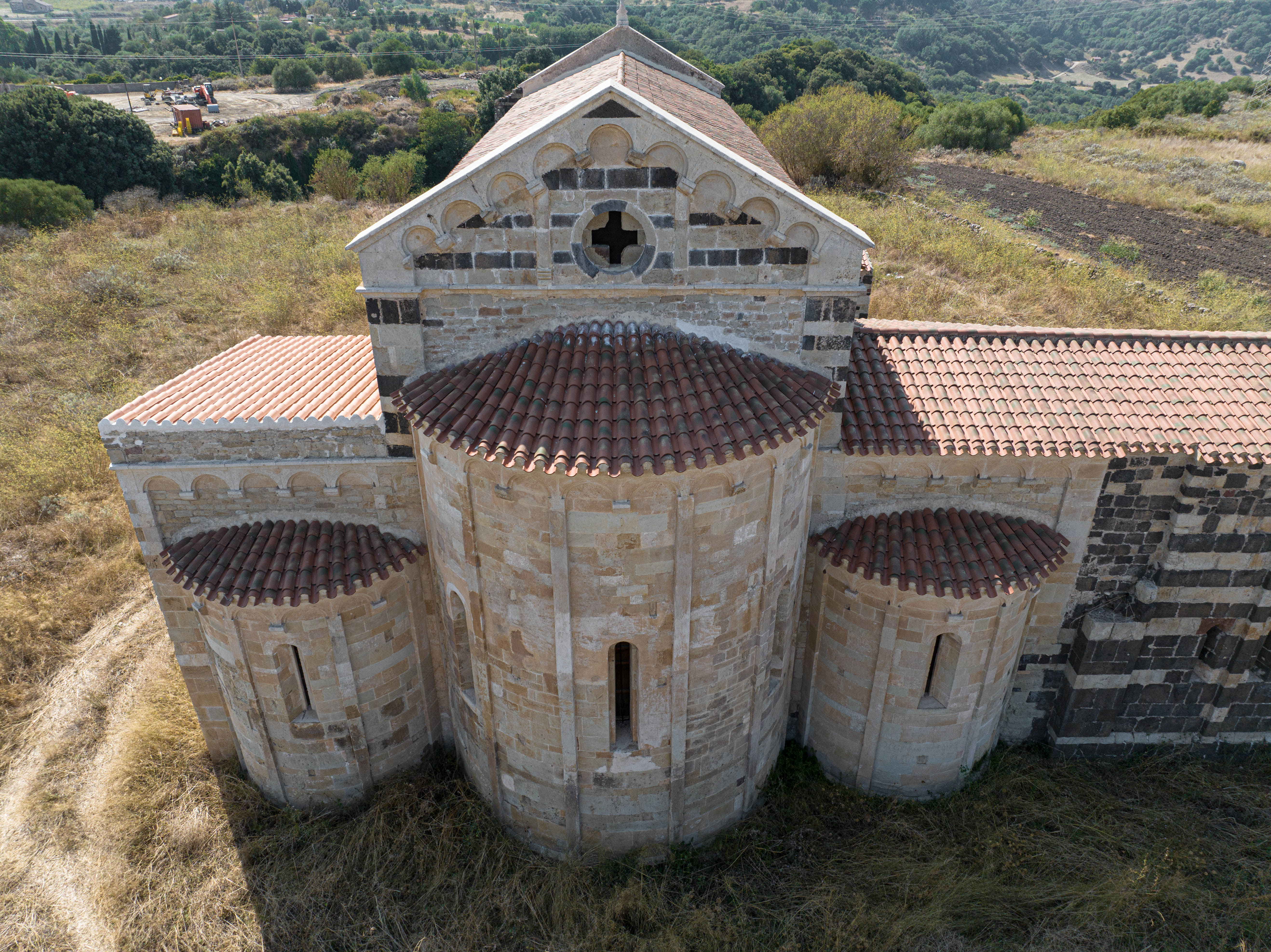Chiesa di San Michele di Salvenero
Chiesa di San Michele di Salvenero
The church of San Michele di Salvenero, located in Ploaghe, stands as a precious historical and architectural testimony, representing the only surviving element of the village of Salvénero, abandoned at the end of the 18th century. Its position, adjacent to the Benedictine abbey of San Michele, suggests an important historical connection with monastic life in the region.
In the absence of specific documentation on its origin, scholars had to rely on careful architectural analysis to date the building. The stylistic and construction characteristics of the building indicate its probable construction in the first quarter of the 13th century. This hypothesis is reinforced by the similarities found with the church of Santa Maria Maddalena in Chiaramonti, suggesting the intervention of similar craftsmen or those belonging to the same construction school.
An element of particular charm and historical-artistic relevance is the characteristic two-tone colour scheme that distinguishes the façade and apse of the church. The alternation of limestone and red trachyte creates a striking visual effect, testifying not only to an aesthetic choice but also to the availability and skilful use of local materials.
This construction technique reflects a widespread practice in Sardinian Romanesque architecture, which exploited the resources of the land to create striking chromatic effects.
The structure of the church, with a single nave, presents a series of interesting architectural elements. The portal, characterised by slightly overhanging mouldings, is a fine example of stonework, while the rectangular window, added at a later date, testifies to the interventions and modifications the building underwent over time. The decorative arches adorning the façade give rhythm and lightness to the façade, creating an interesting contrast with the solidity of the structure.
The apse of the church deserves special attention for its architectural details. The presence of a small double splayed single lancet window not only aesthetically enriches this part of the building, but also plays an important role in the interior lighting, creating suggestive plays of light. The cruciform window on the eastern wall adds a further element of interest, combining functionality and religious symbolism.
The church of San Michele di Salvenero is therefore a monument of extraordinary importance for the understanding of Romanesque architecture in Sardinia. Its survival, in a context of abandonment of the original village, accentuates its value as a historical document. Every element of the building, from the two-tone colouring of its walls to the architectural details of the apse, tells a part of the history of medieval Sardinian art and architecture, offering valuable information on construction techniques, stylistic influences and the evolution of artistic taste over the centuries.
Visit the church with the Virtual Tour
See photos in high definition
































 ►
Explore 3D Space
►
Explore 3D Space
